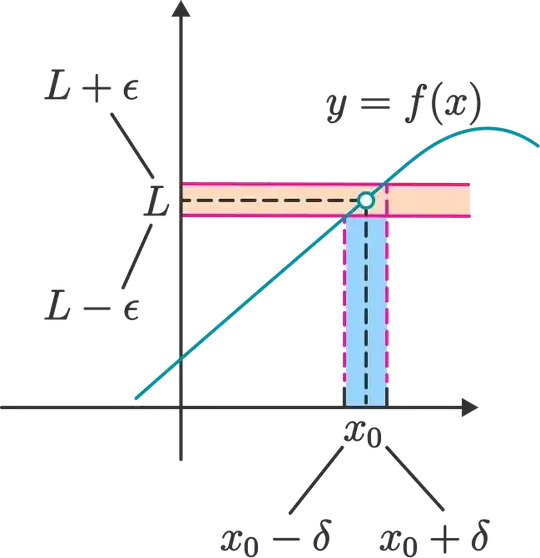we're approaching a
This notion of 'approaching' is only an informal way to understand. In the precise definition, it is not there. See wiki
Note that $x$ = {$(a- \delta, a + \delta) - a$}. That is, $x$ $\neq$ $a$ because we get 0 $<$ 0 $<$ $\delta$ , which is false, and $f(x)$ may be equal to $L$, according to the definition.
This part is kinda sketch, it is true that $x \neq a$ because we want $0< |x-a|<\delta$;notice the strict inequality.
Why? As far as I have understood, L is a function of a, we're approaching a and, as a consequence, we approach L.
I'd say the way you are thinking about it is brilliant here and has made me post my own question (see here). However, as far as 'standard' basic concepts go, the limit is informally dependent on the neighbourhood of 'a' rather than of that point 'a' itself.
I wouldn't personally call it a 'function' because it is non standard, a better way to say it would be to say that the limit is dependent of neighbourhood around 'a' rather than 'a' itself.
I'm asking this question because, from what've read, $f(x)$ can be equal to $L$. See Limits: why $f(x)$ can be equal to $L$ and $x$ can't be equal to $c$. Also, the book I'm working on also says $f(x)$ = {$(L - \varepsilon, L + \varepsilon)$}
Here it depends on your definition of $f(x)$ and it's kind of a subtle point. I had a similar doubt a long while back, have a look in this post.
